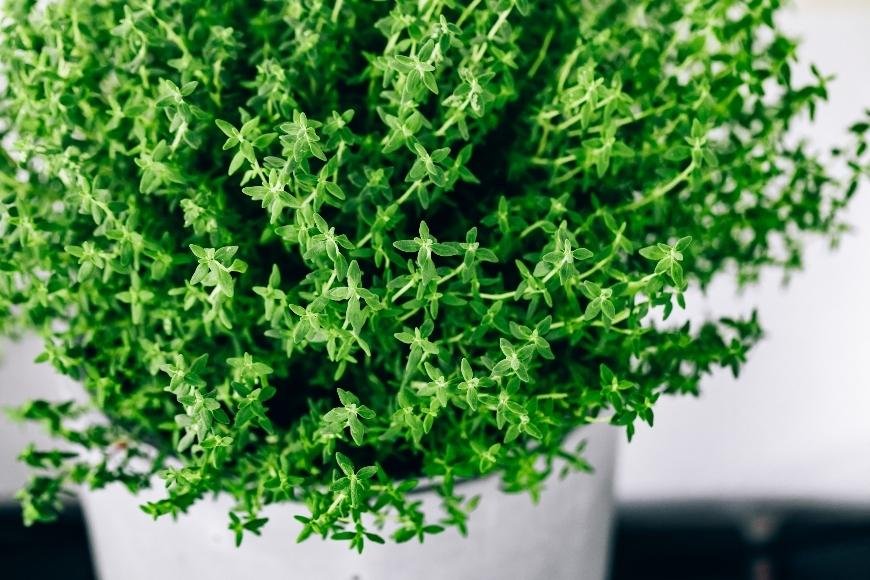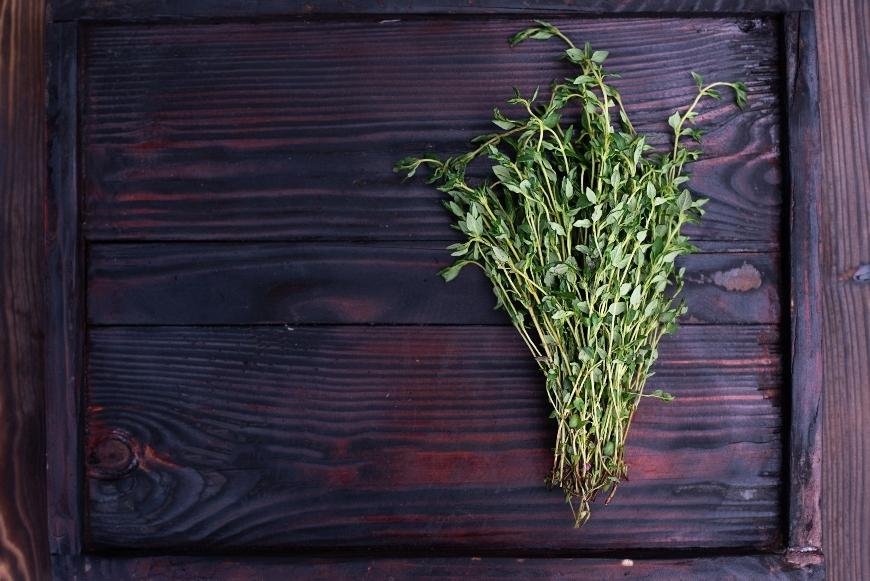How to grow Thyme?
If you're eager to know how to cultivate thyme, an incredibly useful herb for your garden this guide will provide insight into its many benefits and tips on successful growing

In this thorough guide, we'll delve into the particulars of cultivating thyme and how it can be a great addition to your herb garden. Thyme isn't only a key component in many recipes, but also offers healing benefits that are highly sought after.
We'll begin by discussing different thyme varieties and their unique characteristics, followed by preparing the soil for optimal growth. Next, we will delve into planting techniques and tips on watering and fertilizing your established thyme plants. Additionally, controlling weeds and pests is crucial for healthy growth; therefore, we will provide guidance on these issues as well.
Finally, harvesting thyme at the right time ensures maximum flavor and potency - so don't miss our advice on when to harvest! If you encounter any problems along the way or have questions regarding how to grow thyme successfully indoors or outdoors, our troubleshooting section has got you covered.
Table of Contents:
- Selecting the Right Thyme Variety
- Preparing the Soil
- Planting Thyme
- Watering and Fertilizing
- Controlling Weeds and Pests
- Harvesting Thyme
- Troubleshooting Common Problems
- Frequently Asked Questions How to Grow Thyme?
- Conclusion
1. Selecting the Right Thyme Variety
When selecting the right thyme variety for your herb garden, you have many to choose from that will suit both your taste and needs. To help you make an informed decision on which type of thyme plants to grow, let's explore some popular options:
- Common Thyme (Thymus vulgaris): Also known as English or Garden Thyme, this versatile herb features tiny gray-green leaves that remain evergreen throughout the growing season. It has a strong flavor perfect for seasoning meats and vegetables.
- Lemon Thyme (Thymus x citriodorus): With its delightful citrus scent and flavor, lemon thyme adds a zesty twist to dishes like chicken or fish. Look for varieties such as Golden Lemon Thyme or Silver-Edged Lemon Thyme for added visual interest in your garden.
- French Thyme (Thymus serpyllum): This variety boasts delicate variegated leaves with a milder flavor than common thymes ideal for those who prefer subtler herbal notes in their cooking.
- Creeping Thymes (e.g., Caraway-Thymus herba-barona; Woolly-Thymus praecox subsp. britannicus): Ideal as groundcovers due to their low-growing habit, creeping thymes add beauty and fragrance while helping suppress weeds in your garden beds.
To ensure success when growing thymes indoors or outdoors, consider factors such as climate compatibility (cold hardiness zones vary among species), sun exposure requirements (most thymes prefer full sun), and intended use (culinary, ornamental, or both). Additionally, don't be afraid to experiment with different varieties of thyme plants are generally easy to propagate via stem cuttings or division of established plants.
Once you've chosen the perfect thyme variety for your garden, it's time to prepare the soil and get planting.
2. Preparing the Soil
Before you start growing thyme, it's essential to prepare the soil correctly for your plants to thrive. Thyme prefers well-draining soil with a pH level between 6 and 8. To achieve this, follow these steps:
- Test your soil's pH level: Use a soil test kit or send a sample to a local extension office for testing.
- Aerate the soil: Loosen compacted dirt by using a garden fork or tiller, which will help improve drainage and allow thyme roots to grow more easily.
- Add organic matter: If your soil is heavy clay or sandy, mix in some compost or aged manure to improve its texture and fertility.
- Fertilize sparingly: Thyme doesn't require much fertilization; however, adding slow-release granular fertilizer before planting can provide nutrients throughout the growing season. Be cautious not to over-fertilize as it may lead to excessive green growth at the expense of flavorful leaves.
- Maintain proper pH levels: If necessary, amend your soil with lime (to raise pH) or sulfur (to lower pH) according to test results and recommendations from an expert source like Penn State Extension.
In addition to preparing outdoor garden beds for planting thyme, you can also grow thyme indoors in pots or containers. When growing thyme indoors, use a well-draining potting mix and ensure the container has drainage holes to prevent waterlogged soil.
Remember that thyme plants thrive best when they receive at least six hours of sunlight daily. If you're planting outdoors, choose a spot with full sun exposure for optimal growth. For indoor potted plants, place them near a sunny window or supplement natural light with grow lights.
3. Planting Thyme

If you're looking to grow thyme, it's essential to know the best time and methods for planting this versatile herb. Whether you're starting with seeds or seedlings, proper planting techniques will ensure your thyme plants thrive.
Starting from Seeds
To begin growing thyme from seeds, follow these steps:
- Select a suitable container: Choose a shallow container with drainage holes at the bottom. Fill it with well-draining soil mix that is rich in organic matter.
- Sow the seeds: Sprinkle the tiny gray-green leaves of common thyme (Thymus vulgaris) evenly over the surface of the soil. Gently dust the seeds with a scant layer of dirt or vermiculite.
- Maintain moisture levels: Keep the soil moist but not soggy by misting it regularly using a spray bottle filled with water.
- Provide adequate light and warmth: Place your container in an area that receives plenty of indirect sunlight and maintains temperatures between 65-70°F (18-21°C).
The germination process can take anywhere between two weeks to one month before you see green growth emerging from your seeds. Once they have grown into small seedlings, transplant them outdoors after all danger of frost has passed or transfer them into individual pots if planning on keeping them as potted plants indoors.
Growing Seedlings Outdoors
To plant established thyme seedlings outdoors, consider these tips for success:
- Choose a location with full sun: Thyme prefers at least six hours of direct sunlight per day. Ensure the seedlings are placed in an area that is brightly lit.
- Prepare the soil: Amend the planting site by mixing in organic matter and ensuring proper drainage. Thyme prospers in dirt with a pH from 6.0 to 8.0 that has good drainage and is somewhat alkaline.
- Planting distance: Space thyme plants approximately 12-24 inches (30-60 cm) apart to allow for adequate air circulation and growth.
If you're growing thyme indoors, ensure they receive ample sunlight through windows or consider using grow lights. Additionally, keep them away from drafts or extreme temperature fluctuations as these can hinder their development.
Caring for Your Newly Planted Thyme
To help your newly planted thyme establish strong roots and grow into healthy plants, follow these simple steps:
- Maintain moisture levels: Keep the soil moist but not waterlogged during the first few weeks after planting until new growth appears on your thyme plants.
- Fertilize sparingly: Apply a balanced liquid fertilizer once every four to six weeks during the growing season to promote steady growth without overfeeding your plants.
- Pinch back new growth: Encourage bushier growth by pinching back the tips of your thyme plants as they grow. This will help create a fuller plant and prevent legginess.
Adopting these planting techniques should put you on the path to a flourishing thyme crop.
4. Watering and Fertilizing
Growing thyme requires proper watering and fertilization to ensure healthy growth. In this section, we will discuss how often you should water your thyme plants, the best type of fertilizer for them, and other essential care tips.
Watering Thyme Plants
Thyme prefers well-draining soil that doesn't stay too moist. Overwatering can lead to root rot or fungal diseases in your plants. To keep your thyme plants thriving, allow the top inch of soil to dry out between waterings. This typically means watering once every 7-10 days during the growing season.
If the top inch of soil feels dry, it's time to give your thyme plant a drink. For potted plants or those grown indoors, make sure they have drainage holes so excess moisture can escape easily.
Fertilizing Your Thymes
Thymes are not heavy feeders but still benefit from occasional fertilization throughout their life cycle. A slow-release organic fertilizer applied once in spring is usually sufficient for established thyme plants.
- Nitrogen: Use a balanced fertilizer with equal parts nitrogen (N), phosphorus (P), and potassium (K) such as 10-10-10 NPK ratio granules when planting new seedlings or transplanting young thymes outdoors.
- Potassium: As these herbs grow older, consider using potassium-rich fertilizers like potash to promote healthy root development and stress resistance.
- Compost: Adding a layer of compost around the base of your thyme plants can also provide essential nutrients, improve soil structure, and help retain moisture in dry conditions. This is especially helpful for garden thyme varieties that require more consistent watering.
5. Controlling Weeds and Pests
Growing thyme can be a gratifying endeavor, but it is critical to maintain weeds and pests in check so that your plants may flourish. In this section, we'll discuss various methods for controlling these unwanted intruders.
A. Mulching
Mulch is an excellent way to prevent weed growth around your thyme plants. Covering the earth with natural components, for example, straw or wood chips, makes a hindrance that impedes weed development while additionally protecting dampness in the dirt. This helps maintain moist soil conditions that are ideal for thyme roots.
B. Hand-pulling Weeds
Although mulching can significantly reduce weed growth, some stubborn invaders may still appear among your thyme plants. In such cases, hand-pulling is often the most effective method of removal since it allows you to target specific weeds without damaging nearby herbs.
C. Natural Predators
Encouraging natural predators into your garden can help keep pest populations at bay without resorting to chemical pesticides that could harm your thyme plants or other beneficial insects like bees and butterflies. For example:
- Ladybugs feed on aphids - common pests found on many herb varieties including thymus vulgaris (common thyme).
- Lacewings consume spider mites - tiny creatures known for infesting potted plants and causing damage by sucking plant juices from leaves.
- Praying mantises prey on various insect species which could potentially threaten established thyme plants' health if left unchecked.
D. Companion Planting
Companion planting is another effective method for controlling pests in your herb garden. By growing certain plants alongside thyme, you can create a natural defense system against unwanted insects:
- Mint repels ants and aphids, which are known to attack thyme plants.
- Daffodils deter rodents that may dig up and eat the roots of young thyme seedlings.
- Chamomile, with its white tubular flowers, attracts beneficial insects like hoverflies and lacewings that prey on common herb pests such as aphids and spider mites.
Implementing these techniques can give you the tools to guard your thyme plants from weeds and pests during their growth cycle. Remember always to monitor your garden closely for any signs of infestation or disease so you can address issues promptly before they escalate into more significant problems.
6. Harvesting Thyme

Harvesting your own fresh thyme can be a highly rewarding experience, and here we'll cover the best techniques for harvesting, drying and storing it. The optimal time for harvesting thyme and the most effective methods of drying and storing it are explored in this article.
When to Harvest Thyme
The ideal time to harvest thyme is during its growing season - typically between late spring and early fall. The plant's essential oils are at their peak just before it flowers, so aim to harvest right before you see white tubular flowers blooming on the stems.
How to Harvest Thyme
- Select healthy stems: Look for green growth with no signs of disease or pest damage.
- Cut carefully: Use clean pruning shears or scissors to snip off the desired amount of stem without damaging the rest of the plant. Leave at least five inches of growth above ground level so that your established thymus vulgaris plants continue thriving throughout the season.
- Rinse gently: If necessary, rinse harvested sprigs under cool water and pat them dry with a paper towel or clean cloth.
Drying Methods for Fresh Thymes
To preserve your freshly harvested garden herbs like common English or French varieties longer-term, consider drying them out using one of these techniques:
- Air-dry: Bundle small bunches together by tying their stems with twine; hang upside down in a well-ventilated, dark space for 1-2 weeks until completely dry.
- Hang thyme sprigs in an oven preheated to 100°F (40°C) for several hours, ensuring that they don't burn.
Storing Dried Thyme
Once you've dried your thyme plants properly, it's time to store them. To maintain their flavor and potency:
- Remove leaves from stems: Gently strip tiny gray-green leaves off of the woody stem by running your fingers along its length; discard any tough or discolored parts.
- Store in an airtight container: Transfer dried thyme into glass jars with tight-fitting lids or resealable plastic bags; keep away from direct sunlight and heat sources like stoves or radiators.
Dried herbs can last up to one year when stored correctly - so enjoy adding this versatile herb to dishes like roasted Brussels sprouts, infused olive oil, and more throughout the year.
7. Troubleshooting Common Problems
Growing thyme can sometimes come with its fair share of challenges, but fear not. We've got you covered with solutions to some common problems that may arise while growing this versatile herb.
A. Disease and Nutrient Deficiencies
Thyme plants are generally hardy and resistant to most diseases; however, they can occasionally suffer from fungal infections like root rot. To prevent this issue, ensure proper drainage in your soil and avoid overwatering. If root rot does occur, remove the affected plant immediately to prevent it from spreading.
Nutrient deficiencies can also affect thyme growth. Yellowing leaves may indicate a lack of nitrogen or iron in the soil. You can address these issues by adding an appropriate fertilizer or amending the soil with organic matter such as compost.
B. Pests
While thyme is relatively pest-resistant, it's still possible for critters like spider mites and aphids to cause damage to your plants. Keep an eye out for any signs of infestation (such as webbing or small insects on leaves) and treat them promptly using natural methods like introducing ladybugs, which feed on many garden pests.
C. Leggy Growth
- Poor Sunlight: Thyme prefers full sun conditions; if your plants aren't receiving enough light, they might become leggy as they stretch towards sunlight sources. Solution: Move potted plants closer to windows or use grow lights to supplement natural light.
- Overcrowding: Thyme plants thrive when they have ample space to grow. Overcrowded conditions can lead to leggy growth as the plants compete for sunlight. Solution: Thin out your thyme by dividing and transplanting established thyme plants, or simply give them more room when planting initially.
D. Slow Growth or Failure to Thrive
If your thyme doesn't seem to be growing well, there are a few potential causes:
- Poor Soil Conditions: Thyme prefers well-draining soil with a pH between 6.0 and 8.0; if your soil is too acidic or alkaline, it may struggle. Solution: Test your soil's pH levels and amend accordingly using lime (to raise pH) or sulfur (to lower pH).
- Inadequate Watering: While thyme is drought-tolerant once established, young seedlings still require consistent moisture in order to develop strong root systems. Solution: Keep the soil moist but not waterlogged during the initial stages of growth until the plant becomes more self-sufficient.
Troubleshooting common problems with growing thyme can help ensure that you enjoy a bountiful harvest from these fragrant and flavorful herbs. With proper care and attention, you'll soon be reaping the rewards of this delightful addition to any garden or windowsill herb collection.
Frequently Asked Questions How to Grow Thyme?
What is the best way to grow thyme?
The best way to grow thyme is by selecting a suitable variety, preparing well-draining soil with a pH of 6.0-8.0, and planting it in full sun or partial shade. Water regularly but avoid overwatering, and use organic fertilizer if needed. Keep an eye out for weeds and pests, then harvest when leaves are fully grown.
Where is the best place to plant thyme?
The ideal location for planting thyme is in an area that receives at least six hours of sunlight daily and has well-draining soil. Thyme can be planted outdoors in garden beds or containers as well as indoors near a sunny window.
What are the issues growing thyme?
Common issues while growing thyme include poor drainage leading to root rot, fungal diseases like powdery mildew, pest infestations such as aphids or spider mites, and competition from weeds. Regular monitoring and proper care can help prevent these problems.
How easy is it to grow thyme?
Growing thyme is relatively easy due to its low maintenance requirements and adaptability to various conditions. With proper care including appropriate watering, fertilizing, weed control measures along with timely harvesting will ensure healthy growth.
Conclusion
Growing thyme is a rewarding and enjoyable experience. With the right knowledge, you can have success with this herb in your garden or container. Make sure to select the best variety for your needs, prepare the soil correctly, water and fertilize regularly as needed, control weeds and pests responsibly if necessary, harvest when ready to maximize flavor and store properly so that it retains its quality over time. Grow thyme today - you won't regret it.


































































































































